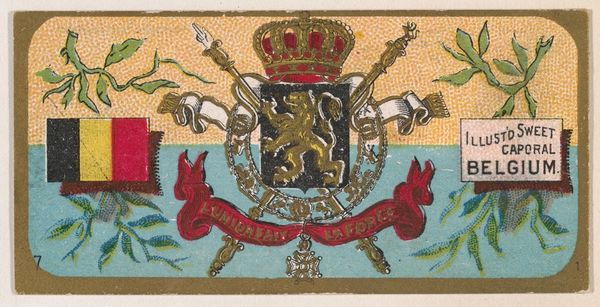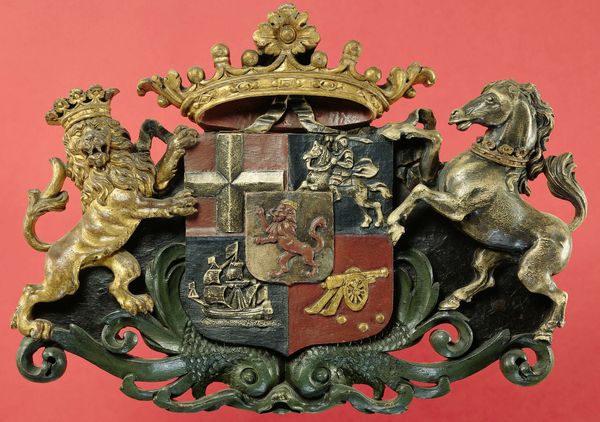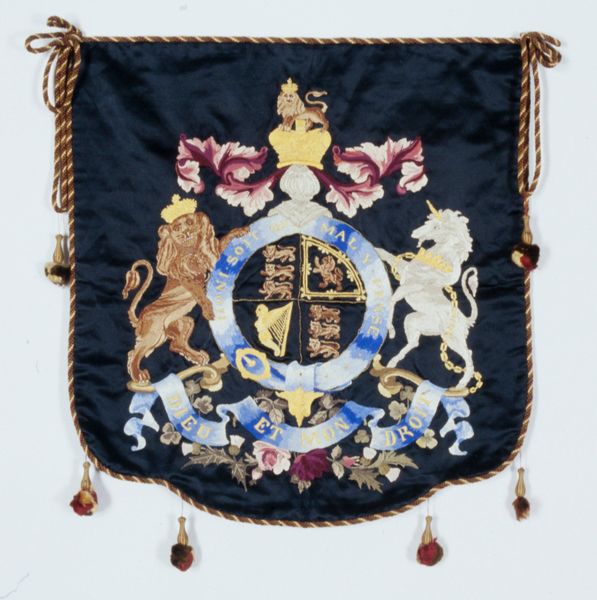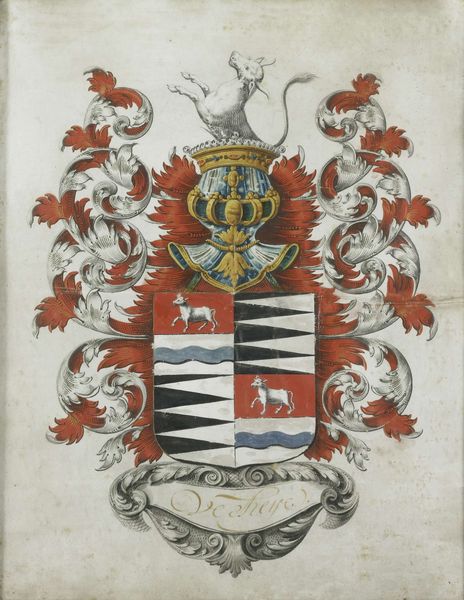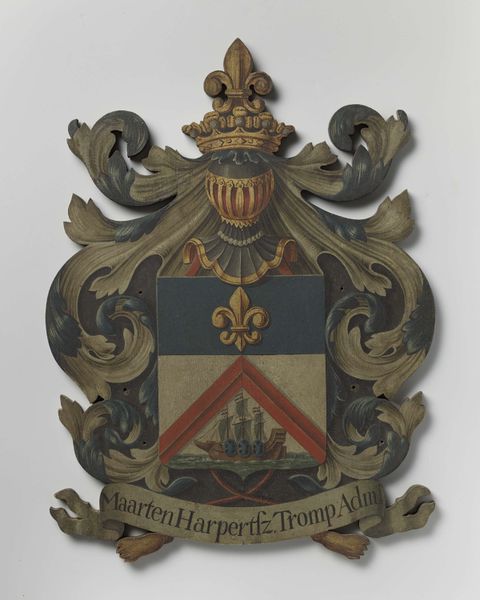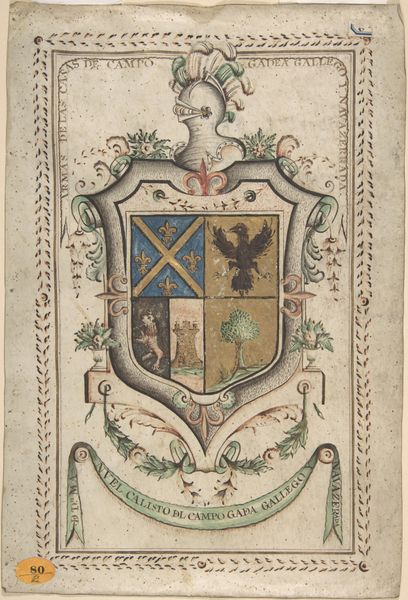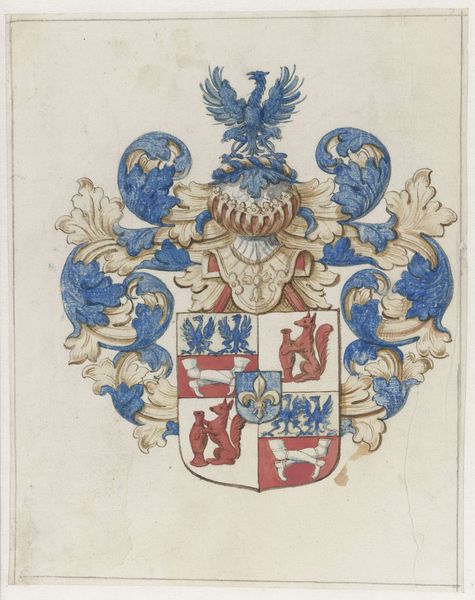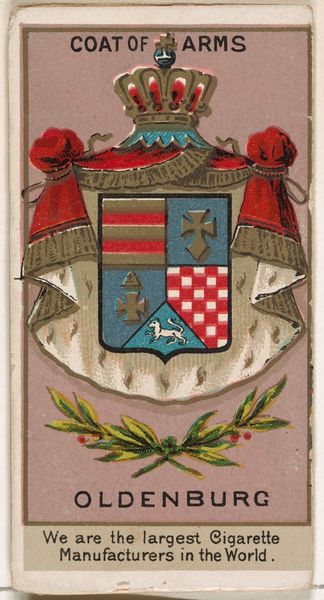
weaving, textile
#
baroque
#
weaving
#
textile
#
decorative-art
#
decorative art
Dimensions: height 56.5 cm, width 66.5 cm, depth 7 cm
Copyright: Rijks Museum: Open Domain
Curator: Here we have a pillow cover from the late 17th century, circa 1677 to 1683, that’s attributed to an anonymous maker. It depicts the coat of arms of Engel de Ruyter, meticulously rendered in textile. Editor: It’s quite imposing, really. The sheer density of the imagery almost overwhelms the eye. The strong heraldic elements suggest formality, even grandeur. Curator: Indeed. Engel de Ruyter was, of course, the son of the famous Admiral Michiel de Ruyter. The imagery broadcasts his lineage and status—a complex interplay of personal and national identity woven into the fabric. These were potent visual symbols of family achievement and social standing. Editor: Speaking of fabric, the weaving itself appears incredibly detailed. The rendering of textures—the lion's mane, the horse's hair, the feathery wings of the dragon supports—are all quite compelling, a remarkable exercise in transferring visual information onto such a tactile surface. The palette is limited, but effective, the reds, blues, and browns playing well against each other. Curator: This pillow cover serves as a tangible artifact of a pivotal historical moment, where naval power translated directly into societal power and nobility. Consider that it was made in the Dutch Republic, at the peak of its Golden Age of prosperity and influence, achieved largely through maritime prowess. Editor: It's interesting how a traditionally domestic object is transformed into a vehicle of public display. The pillow cover’s medium, technique, and subject are unified so tightly—a domestic art form becomes an heraldic banner celebrating power! Curator: Exactly, it's not just decoration, it’s a political statement. These types of art elevated the person of Engel de Ruyter in a period hungry for heroes, or those tied to them. Editor: Well, I find myself reconsidering my initial impression. Beyond the density, the careful craftsmanship and the rich layering of symbolic and personal history offer something genuinely intriguing, something that continues to engage even now. Curator: Agreed, and in this piece, history and art become meaningfully, inextricably linked.
Comments
No comments
Be the first to comment and join the conversation on the ultimate creative platform.


